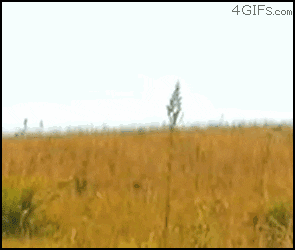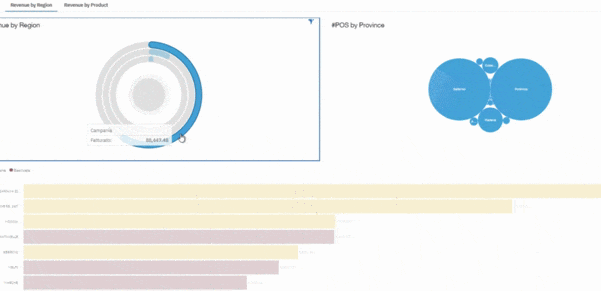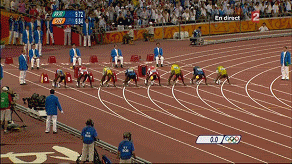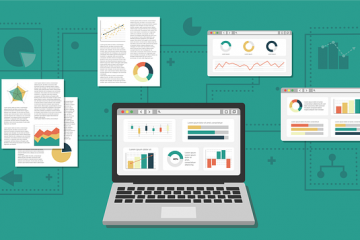MM030 – Ancestral Psychology behind Data Visualization
Instinct and Innate Behaviours
Business happens when something or someone has been able to catch the customers’ attention. PowerPoint presentations, for example, are used to persuade any person to put their hands in the wallet.
Messages and works of conviction come to our perception mainly in the form of sounds and images.
An advertising billboard has always done its dirty job and will probably keep on doing that way, but today it is not enough to make the difference. Internet and television have accustomed us to movement … of ideas, information, and images. Images in movement are what spontaneously catches and captures our attention instantly: marketers, movie directors, liquor stores and anyone who has a sign with blinkin light at the entrance of their restaurant have understood this well.
But why is the movement so powerful?
The answer is in the natural behaviour of human being. Man is nothing more than an animal with the ability to memorize, elaborate complex reasonings and create articulated social structures.
It is a matter of basic, survival instinct. In the past, we had to look for food to survive and our brain is designed to solve survival problems and be able to spot prey in the distance. Hunting the prey, sensing the danger, tend to remain motionless or to blend in, but at the first movement, the visual system is activated by identifying them. An extremely important factor for survival is our brain’s ability to evaluate movement. In a nutshell, we are hardwired to notice and perceive anything in motion as a potential threat. The eyes and brain work in harmony to ensure motion detection before seeing anything else.

Instinctive behaviuor is made by genetic factors and is typical of the species. It is handed down from generation to generation without receiving any influence from previous learning or experiences. It is a need for poorly evolved species, equipped with a primitive nervous system, it is equally so in species evolved in emergency situations.
Why movement?
Here are different features of movement which contain different meanings and interpretations:
– Direction: the movement towards you suggests a threat, the opposite is not relevant
– Change of direction: can represent a change in intentions (hostility or peace)
– Speed and acceleration: faster movements increase the sense of urgency and increase the perception and the possibility of noticing them
In another connection to our biological roots, when we notice something in movement, we pause and look at it. This can be traced back to the strategy (used by some animals) of freezing in face of a dangerous situation, since any movement can capture the attention of the predator.
A useful experiment to check the impact of the movement is to visit a place where you regularly go, move to a room and carefully observe the details. Soon we will catch details never noticed before, run away from attention. The reason why these items have never been inspected before is they never moved.
To summarize, movement attracts, its absence does not. That is why mobile messages, videos and intermittent illuminated signs are used. They all reproduce our instinct to follow movements. A static stimulus is much less likely to catch the eye: for today’s customer, an inanimate object simply becomes part of the furniture, as if it were wallpaper. Movement creates a sense of urgency, in this case, not to escape from a predator, but to get into a shop.
Movement perception
Each moving image is transmitted to our brain in the form of several frames and each of these static images persists a little time on the retina and small discrepancies are detected from one frame to another, when the image is processed in the brain.
Motion perception is the process of understanding the speed and direction of the elements in a scene through the visual input received. Monocular vision, or vision from one eye, can detect movement; however, this type of vision is not optimal in the perception of depth. For this reason, binocular vision is more effective in perceiving distance movement. In monocular vision, the eye sees a two-dimensional image in motion, which is sufficient at close distances; in binocular vision, both eyes are used together to perceive the movement of an object by monitoring the differences in size, position and perspective.

Neuroscience studies have shown that when people watch movies their brains are often “synchronized”. Their brain activity is almost identical. This implies that there is a unified response to viewing moving images and that suggests that people will tend to get similar experiences from the video, reducing the potential for misinterpretation that could come from text alone.
Data Visualization and movement
Development of visualization tools that help us assimilate information is essential in all businesses, so researches about it is even more important. Data Visualization is a powerful tool that lets us easily identify models and trends, allows the rapid extraction of information, stimulates the development of hypotheses and offers its valuable contribution in structured decisions making.
Data Visualization has started with spreadsheets with sets of big numbers, then with static images. Although images already create a high involvement level, movement can do it deeper. Videos are great for conveying complex messages in ways that text and images are unable to do. There is currently a heavy migration towards the creation of dynamic objects that replicate attention patterns to movement like our brain.
Although the use of PowerPoint is still widespread, there are many other possibilities to give vitality to the data: it is possible to create visualizations in which the elements move from one position to another, or it is possible to mend a series of images like a cartoon. Yet another way is to show a series of static graphs in sequence that generate the illusion of movement.
Animations can help people see transitions from one state to the next and allow them to notice changes more easily.
Grouping and moving together different elements is another innate behaviour of our brain. If we consider a flock of birds, which fly in the same direction, we assume that they belong to the same group. Once we start thinking about how to animate data, we know that users will perceive visual elements that move together as related.
The data animations are catalogued mainly in these categories:
Data update animation. This is probably the most common type of animation and it works displaying updates triggered by a single user action. There are two types of user triggers: click on a view (with updating of all other objects related to); scrolling down the page.

Soft transition animation A more subtle animation technique is to animate a chart when a user positions mouse on the chart.
Looping animation (GIF) Loop animation (or GIF) are a series of images stitched together, like a comic.
Fun animations Not all animations need to have a specific reason in the data. It can be an easy way to engage users. GIFs of a few seconds are used on Twitter to show the most important fragments of an athletics competition with a normal duration of 1 minute. This generates greater visitor involvement

Small multiples It is not necessary to have moving objects, but it is simply possible to display the graph one step or slide at a time.
In animated view, the target user is asked to follow the progress of the information, while the object moves from one frame to the next. It can be done through narrative stories, videos or a series of images in static form; but users are required to keep track of the information received to offer more engaging content and animation is a powerful tool for keeping memories.
Movement is no more optional
Pictures published by Google regarding the use of YouTube vaguely convey the idea of the importance of videos and movement. There is talk of billions of views every day with hundreds of millions of hours of video viewing. The average time spent watching kitten videos and tutorials is around 40 minutes a day, for smartphones only. It is also reported that anyone who wanted to watch all the videos on YouTube would take 49 years, with never sleep or take a break. And YouTube “only” holds 60% of the online video market.

This reveals a real obsession with watching videos. But why?
It is difficult to give an exhaustive answer, but… either we have a huge amount of free time or humans are fascinated by video and moving images.
Ultimately why the movement?
- Animal instinct
- We easily remember what moves
- Greater predisposition to understand things when represented in the movement form
We evolved to love moving images
It is well known that stirring emotions in marketing has an impact on consumer decision making. Moving images can get a certain reaction from the viewer by involving him for a longer time and leading him to be a loyal consumer.
As people’s attention spans become shorter and shorter, it is imperative to immediately capture their interest in the first few seconds.
What are the advantages deriving from the movement in digital marketing?
- Catching people’s attention
- Increasing dweel time
- Maling text more interesting
- Creating a strong brand identity
- Big return, little investment
https://www.berghahnjournals.com/view/journals/projections/2/1/proj020102.xml
https://link.springer.com/article/10.1023/A:1013184611077
https://www.berghahnjournals.com/view/journals/projections/2/1/proj020102.xml
(Banner Image by Brian Merrill from Pixabay )


